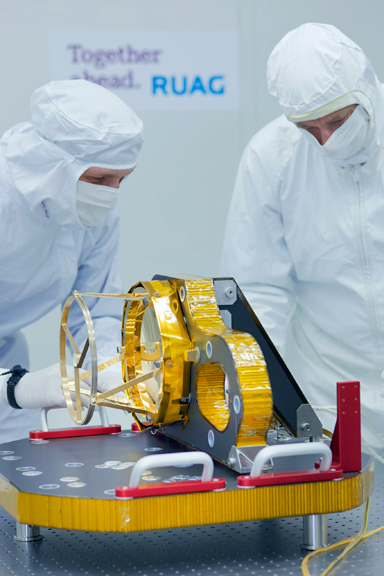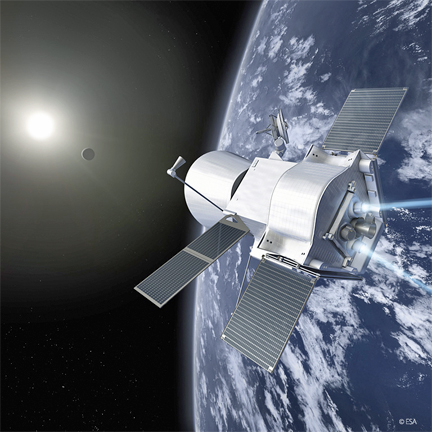
[SatNews] The planet Mercury is to be 3D mapped by a European laser altimeter—on board the BepiColombo space probe, the BepiColombo Laser Altimeter (Bela) will survey Mercury’s surface to generate insights into the planet’s formation.

RUAG Space manufactured BELA’s receiver subsystem and delivered it to the customer, the Space Research and Planetary Sciences Division at the University of Bern.
BepiColombo is Europe’s first mission to Mercury, the innermost planet in our solar system, and is regarded as the most sophisticated scientific mission in European space history. For at least one year, two orbiters will examine the planet very closely—one of them, the Mercury Planetary Orbiter (MPO), under the responsibility of ESA, will explore the planet’s surface and composition. The MPO will carry eleven scientific instruments, including the BepiColombo Laser Altimeter.
Bela will examine Mercury’s topography—its shape, the gravitational field, the surface makeup and its reflection. To do this, a laser beam will be shot from Bela’s transmitter onto Mercury’s surface and then bounced back to Bela’s receiver. By measuring the elapsed time between the laser beam’s transmission and its return, it is possible to use the speed of light to calculate the distance between the spacecraft and the planet’s surface – and hence the “height” of that surface, to a precision of one meter.
Professor Nicolas Thomas, from the Physics Institute at the University of Bern, is responsible for the laser altimeter’s scientific efforts. “Absolute precision is decisive for Bela’s success because not only do we want to create a topographic profile, we also want to measure slopes and surface structures,” he said. “Through extensive testing, RUAG Space has developed a system for Bela to do this that can withstand the difficult conditions in space without sacrificing accuracy.”

Artistic rendition of BepiColombo en route to Mercury.
Image is courtesy of the European Space Agency.
RUAG Space is providing the receiver for Bela. The weak laser pulses back-scattered from Mercury’s surface are focused via a 20cm telescope and a very narrow optics filter onto a photodiode; this then converts the received light into electronic pulses. Special software developed by RUAG makes it possible to evaluate even extremely weak returning light impulses that are made up of only a few photons.
The RUAG Space infosite is located at http://www.ruag.com/

